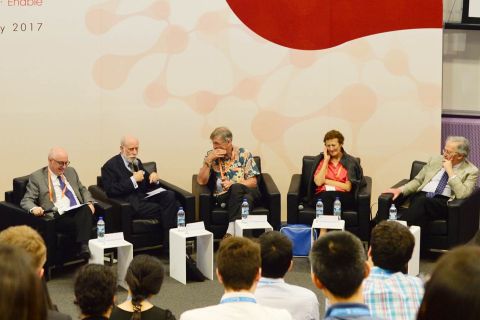
By Phil Thornton
SMU Office of Research & Tech Transfer – The late US President Ronald Reagan famously summarised the pernicious nature of inflation in his pithy comment: “Inflation is as violent as a mugger, as frightening as an armed robber, and as deadly as a hit man.”
For this reason, individuals and households have to take a view on the next movement in inflation when making a wide of range of decisions over savings, spending and investments. Future inflation is also a key factor for businesses when setting prices and wages.
Measures of people’s inflation expectations therefore play an important role in the way that central banks take account of likely consumer and firm behaviour when setting their monetary policy.
This is particularly important in Singapore, which as an open trade-based economy with no capital controls is open to the impact of shocks from factors such as inflation.
Surveys are the most common instruments for gauging consumer inflation expectations and attitudes. Since 1999 the Monetary Authority of Singapore (MAS), the central bank of Singapore, has been providing a summary of forecasts of Singapore's key economic indicators by economists and analysts. The MAS Survey of Professional Forecasters is conducted quarterly following the release of economic data for the previous quarter by the Ministry of Trade and Industry in Singapore.
Different from the MAS’ survey, the Singapore Index of Inflation Expectations (SInDEx) is a survey of consumers in Singapore to better understand the behaviour and sentiments of decision makers in Singapore households.
Aurobindo Ghosh, the Principal Investigator and Assistant Professor of Finance from the Singapore Management University, says the genesis of SInDEx was an approach by MasterCard Worldwide and the SMU Sim Kee Boon Institute for Financial Economics (SKBI) to develop an index of inflation expectations among the population.
“In an uncertain world, post the global financial crisis of 2008, there was a fear that inflation expectations might become “unhinged” causing a major policy challenge for monetary policymakers as they would find it increasingly difficult to “anchor” inflation expectations,” he says.
Analysing consumers’ sentiments
Since 2011, economists at SMU have collected answers to specially designed questions from consumers which represent a cross section of Singapore households. “The main purpose is to evaluate how anchored or grounded the inflation expectations are among a representative population in Singapore.”
To that end, researchers in SKBI created two indices to measure inflation expectations – one for one year ahead (one-year-ahead), and the other for five years ahead (five-year-ahead).
The most recent quarterly report (December 2016[1]) of inflation expectation showed that the one-year-ahead index (which excludes accommodation and private road transportation related costs) saw a significant jump to 2.82% from its lowest ever recorded average of 2.47% in September 2016[2]. More significantly, for a subgroup of the population who own their accommodation and use the public transport, the one-year-ahead index indicated an increase to 2.65% from its record low of 2.3% in September 2016. This subgroup’s expectations of inflation are usually considered to be more representative of the larger population, as they are not exposed to private transport or private accommodation expenses.
These results indicate that there has been a substantial increase in Singaporeans’ perception of future price changes. This might be attributable to both domestic and global price pressures and expected increases in oil and commodity prices.
Professor Ghosh points out that individuals are not just looking at communications of inflation but using their own perceptions and past price experience. “This influences their opinion,” he says.
While falling accommodation costs act to subdue the inflation expectations, Singaporeans also take account of everyday items such as food staples even though that forms a small part of the average household budget.
“It is possible that even though accommodation prices have been subdued for a while, which weighs down the actual inflation, higher food prices or a slightly weaker Singapore dollar might be the real reasons Singaporeans feel that prices are going to move up,” he says.
The important point is that the SInDEx does not seek to recreate the official inflation numbers but rather aims to analyse consumer sentiment about price increases one year or five years ahead.
Next step will examine investment behaviour
The index has had a significant impact on the public discourse over policy since its creation. SInDEx, which is the first of its type in the region, has been reported in the print and electronic media including Business Times, the Straits Times, Singapore Business Review, and Yahoo Finance, and has formed part of the knowledge base of decision-making in various investment-related websites.
Given its price stability mandate, the MAS has expressed support for the continued development and enhancement of the SInDEx as a useful perception-based measure that complements information obtained from the central bank’s Survey of Professional Forecasters. A deeper understanding of how the public’s inflation expectations interact with monetary policy decisions would be useful for policy formulation and communications.
Professor Ghosh says the five years of SInDEx surveys have helped researchers identify several factors including socioeconomic, demographic, awareness and expectations-based instruments which impact not just on inflation expectations but also on individuals’ investment behaviour.
Significant research went in to design the multidisciplinary survey using cutting edge marketing tools that looked at psychological aspects of respondents besides statistical and econometric analysis to unravel the data.
By using insights from finance research, he says the SInDEx has added “academic rigour” into the formulation of surveys and their economic analysis.
“In future rounds of the surveys, we plan to further explore the benchmark of investment behaviour vis-à-vis expectations of future outcomes of Singaporean households,” he says.
If researchers can identify how people make decisions within an uncertain environment, they may then be able to propose new financial products that might be suitable for the different lifecycle needs of ordinary Singaporeans.
See More News
Want to see more of SMU Research?
Sign up for Research@SMU e-newslettter to know more about our research and research-related events!
If you would like to remove yourself from all our mailing list, please visit https://eservices.smu.edu.sg/internet/DNC/Default.aspx

